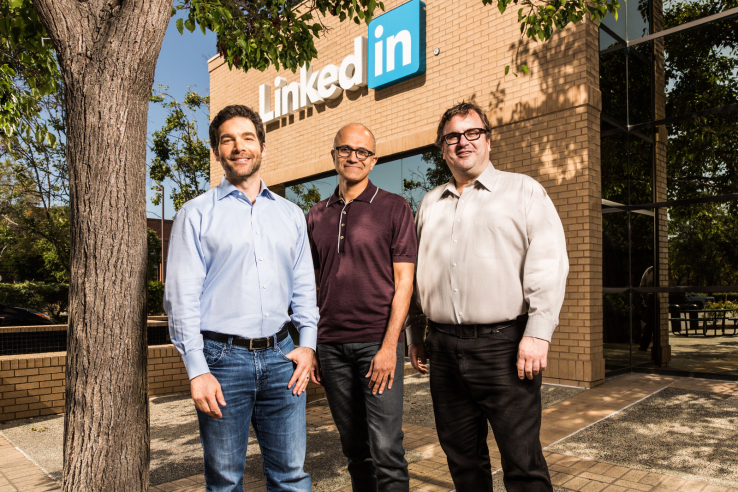

A new SEC filing posted Friday gives more clarity about what led up to Microsoft acquiring LinkedIn for over $26 billion. And they prove that Microsoft wasn’t the only prospective buyer.
It shows that the talks between LinkedIn CEO Jeff Weiner and Microsoft CEO Satya Nadella began on February 16 of this year, just 12 days after the earnings debacle where LinkedIn shares plummeted.
And then it references, not one, but four other unnamed companies and details LinkedIn’s conversations with them.
It has already been reported that Salesforce made a bid for LinkedIn. The documents reference a Party A, likely Salesforce, that ultimately made a bid for $200 per share, above the $196 per share in cash that Microsoft paid. However the $200 was a cash and stock deal, whereas the $196 was an all cash deal. (This works out to hundreds of millions of dollars deducted from the acquisition price).
There were also details about the conversations with at least three other companies, who ultimately backed down. It is unclear to what degree these other bidders were serious contenders or if they were just interested in getting a detailed look at LinkedIn’s financial picture and competitive strategies.
The filing also shows that LinkedIn is subject to a $725 million breakup fee if the transaction with Microsoft does not get finalized.
While we do not know for sure who some of the other buyers might have been, we think it’s possible that Alphabet, IBM, Oracle and Facebook could have all engaged in conversations with LinkedIn. (Recode is now reporting that Alphabet and Facebook were in the mix).
Here’s why:
Alphabet: Google wants to manage everything in your life, from email to calendar. They are also aggressively expanding into enterprise, trying to showcase its cloud services as stronger enterprise products. If you slap LinkedIn on top of that, you have a full stack sales operation — from ground up infrastructure, to connectivity and sales tools, to the actual enterprise interface. The big question here is, where would Salesforce fit into that equation if Google wanted to build a full stack customer acquisition and sales tool? LinkedIn may be a professional network, with a growing user base, but it also represents one of the top methods to connect for potential business deals (that also happens to be great for recruiting).
Facebook: It would not be out of the question for Facebook to at least engage in talks, to get a better look at LinkedIn’s business. While Facebook’s social networking is more personal than professional, they’ve been working on Facebook at Work and other enterprise properties.
Oracle: With LinkedIn, they would have access to a full stack of sales, customer acquisition and talent management solutions. Oracle would get the benefit of having a look into LinkedIn’s massive data trove of how people interface with each other professionally.
IBM: This is one of the few other industry companies that could afford LinkedIn and create synergies with its enterprise technology business. The company is also relatively acquisitive.
We’re digging through the very long filing here to see what other insights we can find.

